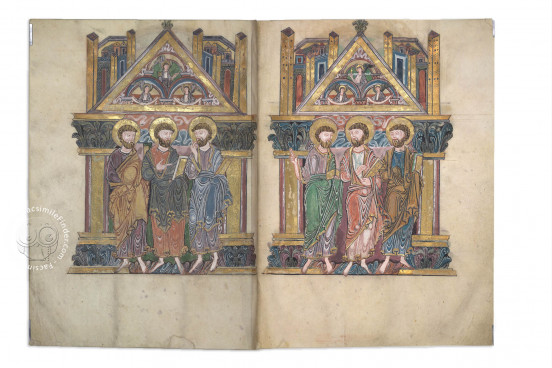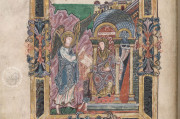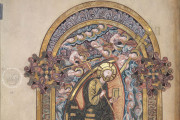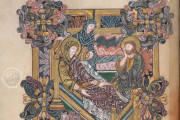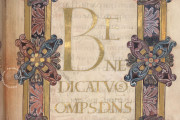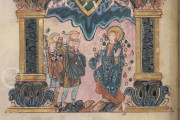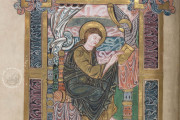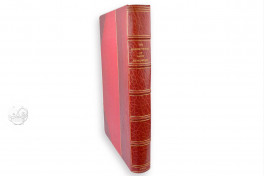The Benedictional of Saint Aethelwold is a Christian religious service book containing blessings reserved for bishops to recite at Mass. One of the most lavishly illuminated manuscripts of its time, it was created for Saint Aethelwold, Bishop of Winchester, at Winchester's Old Minster between 971 and 984. The monk scribe Godeman is identified in a dedicatory poem. Although it has lost fifteen miniatures, the surviving book features twenty-eight full-page miniatures, as well as nineteen text pages with painted frames.
The benedictional is the prime representative of the so-called Winchester style of illumination, famous for the exuberantly decorated framing elements—referred to in the dedicatory poem.
Fleshy Acanthus
The hallmark of the Winchester style is its restless, painterly energy, with bright pinks and whites contrasting with muted earth tones. The style takes its most characteristic form in the framing elements, which are either rectangular or arched at the top and composed of fleshy, stylized acanthus (a foliate motif derived from the depiction of the Mediterranean plant).
A Choir of Saints
The manuscript opens with a series of full-page miniatures depicting the choir of saints, with figures pictured three to a page and grouped by category: confessors, virgins, and apostles (fols. 1r-4r). Saint Cuthbert (d. 687), Bishop of Lindisfarne, numbers among the confessors, and Saint Etheldreda (d. 679), Queen of Northumbria, among the virgins. The dedicatory poem written in gold follows (fols. 4v-5r). A miniature of the Annunciation to the Virgin inaugurates the text proper (fol. 5v).
Focus on Major Church Feasts
Major Christological feasts are introduced by a miniature with an elaborate painted frame (on the left-hand page) and an incipit page with a frame mirroring that of the miniature opposite (on the right-hand page). The miniatures include the Nativity of Christ, the Adoration of the Magi, the Entry into Jerusalem, and the Women at the Tomb (fols. 15v, 24v, 45v, and 51v).
Bishops Pictured
The miniature introducing the blessing for the dedication of a church shows a bishop, probably Saint Aethelwold, pronouncing a blessing on an assembly of monks and clerics. Aethelwold's predecessor as bishop of Winchester, Saint Swithun (d. 962), is pictured at the head of his feast day (fol. 97v).
Stately Writing
Godeman wrote the text in a spacious, round English Caroline Minuscule in long lines (a single column). Headings are in a variety of display scripts modeled on scripts found in the manuscripts of the Roman imperial period, including Rustic Capitals and Uncial, as well as Square Capitals. Two initials are historiated: the O for Trinity Sunday shows Christ in Majesty, and the O for the feast of Saint Etheldreda depicts God the Creator.
A Treasure of Pre-Conquest England
In the modern period, the manuscript was owned by Henry Compton (1632-1713) and Hatton Compton (d. 1741), Henry's nephew, who gave it to William Cavendish (1672-1729), Duke of Devonshire, in the 1710s. It remained in the family until the British Museum acquired the book in 1957 from Andrew Robert Buxton Cavendish (1920-2004), Duke of Devonshire. The manuscripts of the British Museum library were transferred to the newly established British Library in 1973. The current binding of reddish-brown morocco, which dates from 1925, is the work of Sybil Pye (1879-1958).
We have 3 facsimiles of the manuscript "Benedictional of Saint Aethelwold":
- The benedictional of Saint Æthelwold, Bishop of Winchester, 963-984 facsimile edition published by Roxburghe Club, 1910
- The benedictional of Æthelwold facsimile edition published by Princeton University Press, 1995
- The benedictional of St Æthelwold facsimile edition published by British Library, 2002

